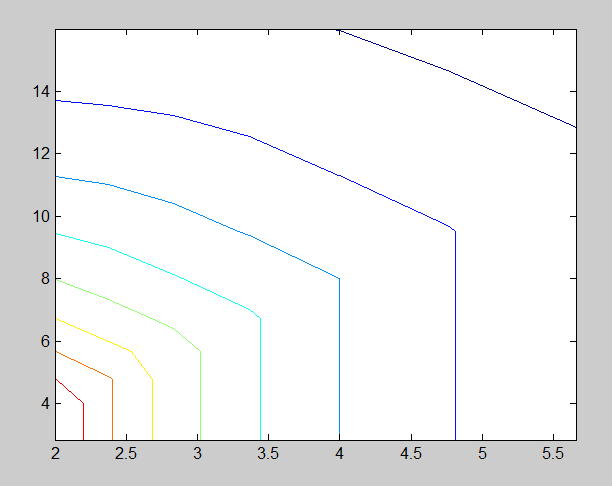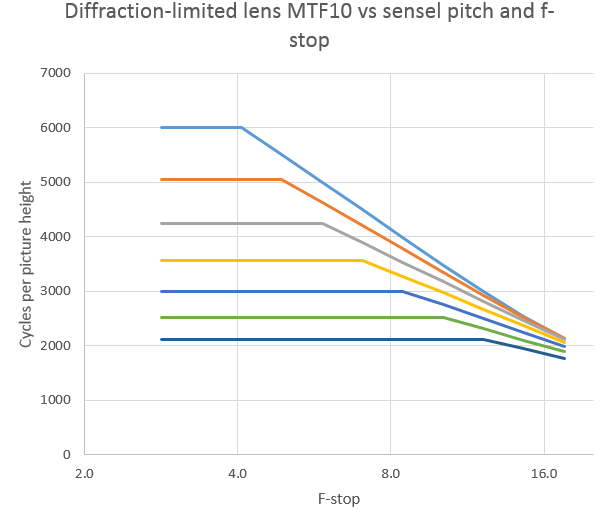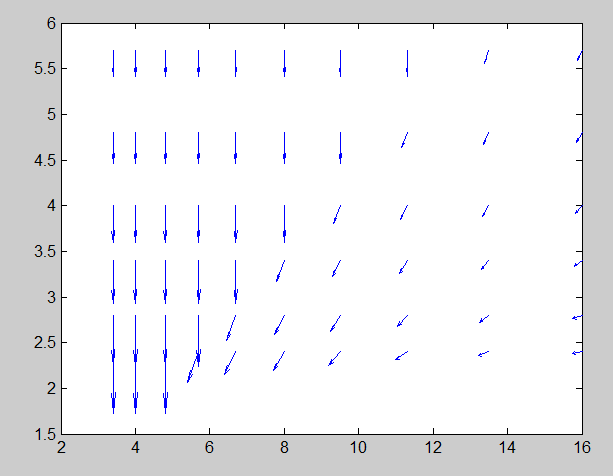There is a school of thought that says that, if you have to pick one, MTF10, the spatial frequency where the modulation is 10%, is a more appropriate metric for imaging system sharpness, since more images will undergo capture sharpening, and MTF10 on the unsharpened image will translate to a higher modulation after sharpening.
One of the problems when doing MTF10 simulations on ideal lenses, or MTF10 testing on high-quality real lenses with the sensel pitches of today’s cameras, is that 10% modulation can occur at spatial frequencies higher than the Nyquist frequency of 0.5 cycles/pixel. When that happens, MTF10 is not a meaningful measure of resolution; once the subject is aliased, who cares what the resolution is?
In order to deal with MTF10s at spatial frequencies higher than Nyquist, I cap the measure at whatever the MTF at the Nyquist frequency is. When that adjustment is made, an MTF10 plot in cycles per picture height for an ideal lens from f/2.8 to f/16 across the bottom, and a Bayer-CFA sensor with no AA filter from 2 um pixel pitch to 5.7 um coming toward you looks like this:
Here’s a contour plot with f-stop up the left side and pitch across the bottom:
With a two-dimensional plot as a family of curves:
And, finally, as the quiver plot of the last post:
All of these plots tell us the same thing, but it’s probably easies to see in the quiver plot. At Pixel pitches of 5.8 um, and lens apertures of f/11 or wider, the way to improved MTF10 is opening up the lens. At Pixel pitches of 4.7 um, and lens apertures of f/9.5 or wider, the way to improved MTF10 is opening up the lens. At Pixel pitches of 4 um, and lens apertures of f/8 or wider, the way to improved MTF10 is opening up the lens.




Leave a Reply